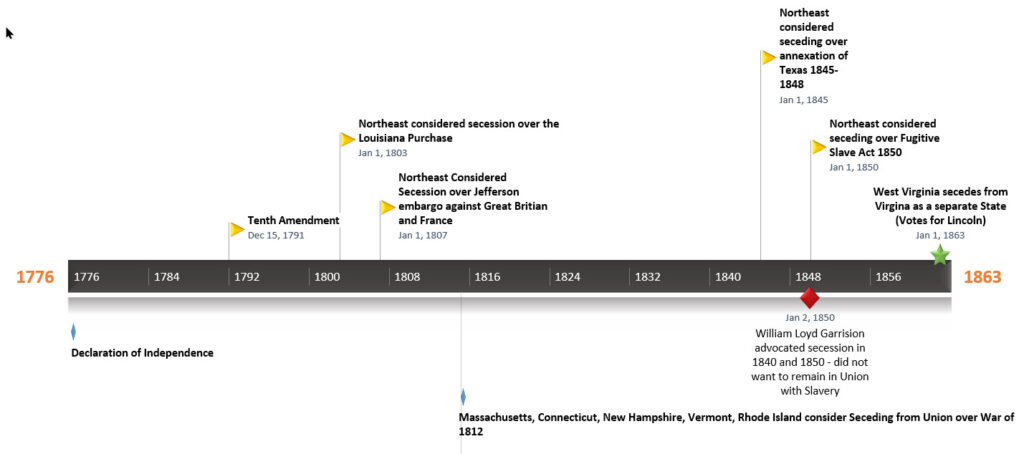Paragraph 9
9) And as with any agreement, the ability has always existed for the States or its People to nullify overreaching acts beyond the “few and defined powers”, and if necessary, leave the compact. Not having this ability tends to make one a slave. Having this ability may tend to keep the Union or Compact of Sovereign States together in a more harmonious manner,

Prior to the Civil War it was understood by the States that secession by leaving the compact was a remedy to an unworkable relationship. It was doubtful that any State would have joined the Union if they knew they couldn’t get out of the Compact. In fact, three States included a secession clause in their ratifying documents – New York, Rhode Island and Virginia. In the above timeline you can see that the Northeast had considered secession five times prior to the war. During the war secession West Virginia seceded from Virginia. Shortly after becoming a State, West Virginia voted for President Lincoln. How convenient. Only President Lincoln came up with the idea that secession was illegal. It was convenient for him to do so, as it helped him justify the killing of nearly 700,000 Americans and nearly 1,000,000 Negroes. This country was founded on the secession of 13 Colonies/States from Britain on July 4, 1776, with the Declaration of Independence. The 10th Amendment indirectly allows for secession as if the power isn’t enumerated the power, in this case secession, is left to the States or to the People. President Lincoln didn’t follow the constitution so it’s not surprising he ignored the 10th Amendment, too.
